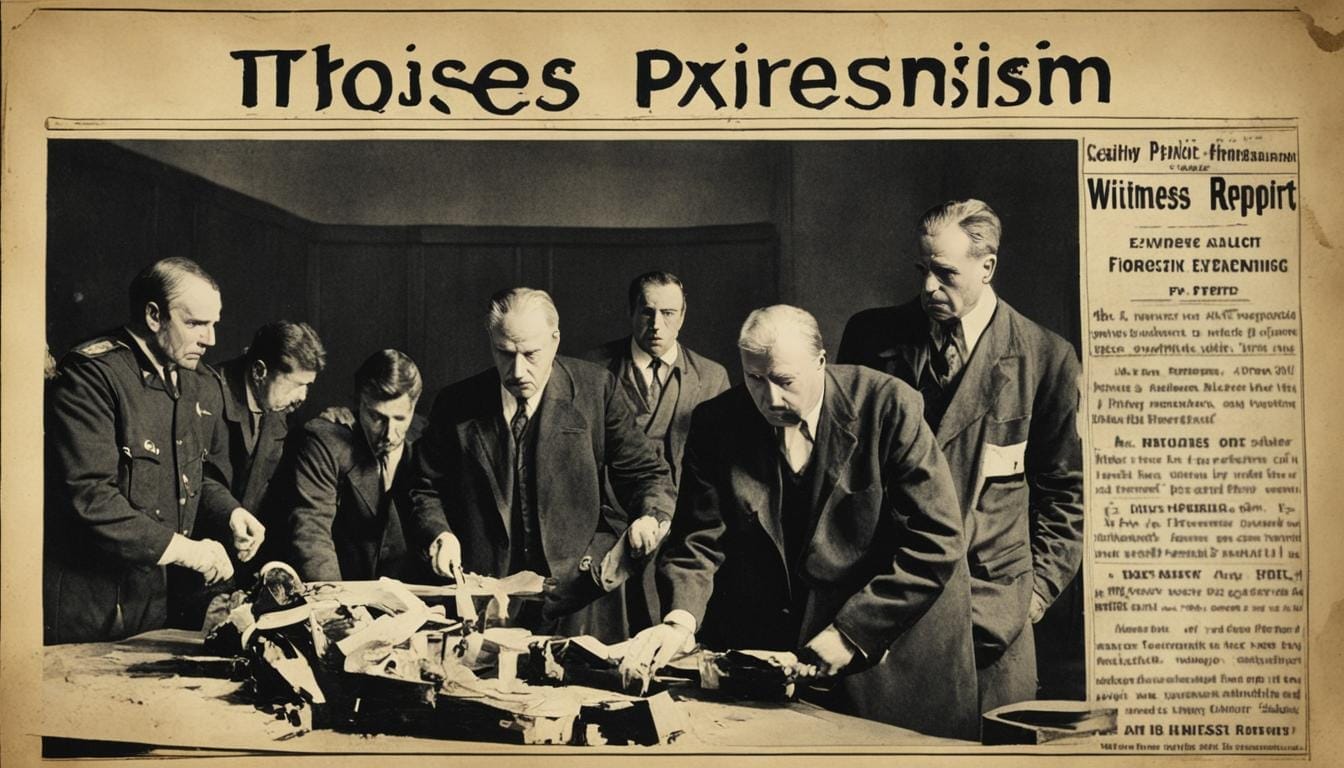When it comes to convicting someone of assault, providing the necessary evidence is crucial. In the United States, assault cases require a burden of proof to be met, establishing the elements of the charge. This includes the defendant’s intent to create fear or apprehension, the victim’s reasonable belief of harm or offense, the immediate physical danger perceived, and the defendant’s present intention to harm or offend.
Strong evidence is essential in assault charges and can include police reports, eyewitness testimony, medical records, and other relevant items related to the assault incident. Each piece of evidence contributes to building a strong case and supporting the victim’s claims.
Understanding the evidence requirements and the burden of proof in assault cases is crucial for both the prosecutors and the defense. It’s important to gather all the necessary evidence and present it effectively in court to increase the chances of securing a conviction.
In the following sections, we will explore the different types of evidence that can be presented in an assault case, the potential penalties for assault convictions, and the legal defenses that can be raised. By gaining a comprehensive understanding of these aspects, you can better navigate the complex legal process and protect your rights.
Types of Evidence for Assault Conviction
In assault cases, various types of evidence can be presented to support a conviction. These forms of evidence play a crucial role in establishing the occurrence of the assault and the harm inflicted on the victim.
Physical Injuries:
Physical injuries sustained by the victim can serve as compelling evidence of harm in an assault case. Unedited photographs and medical records documenting these injuries provide visual and documented proof of the violence inflicted.
Eyewitness Testimony:
Eyewitness testimony from the victim, the perpetrator, or other third-party witnesses can provide valuable insight into the events that unfolded during the assault. However, it’s important to consider the potential limitations of eyewitness testimony, such as memory reconstruction and bias, which can impact its reliability.
Defendant’s Intent:
Prosecutors often rely on the defendant’s intent as evidence in assault cases. This intent can be inferred from the defendant’s statements or behavior leading up to the assault. Statements expressing a desire to harm or offend, coupled with aggressive or threatening behavior, can be strong indicators of intent.
Evidence Types for Assault Convictions:
| Evidence Type | Description |
|---|---|
| Physical Injuries | Unedited photographs and medical records documenting the victim’s injuries. |
| Eyewitness Testimony | Testimony from the victim, perpetrator, or third-party witnesses. |
| Defendant’s Intent | Statements or behavior providing insight into the defendant’s intention to harm or offend. |
While these types of evidence are frequently used in assault cases, it’s essential to ensure their admissibility and reliability through proper legal procedures. The weight given to each form of evidence may vary based on the specific circumstances of the case and the legal standards applied.
Penalties for Assault Conviction
When it comes to assault convictions, the penalties can vary depending on several factors. These factors include state laws, the specific details of the case, and the severity of the assault. Let’s take a closer look at the potential consequences individuals may face if convicted of assault.
Types of Assault and Their Penalties
Assault charges can be categorized into different degrees or types, each carrying its own set of penalties. Here are some common examples:
| Type of Assault | Potential Penalties |
|---|---|
| Simple Assault | Misdemeanor offense punishable by up to one year in county jail and fines. |
| Aggravated Assault | Felony offense carrying more severe penalties, such as longer prison sentences and higher fines. |
| Assault with a Deadly Weapon | Felony offense with the potential for harsher consequences compared to simple assault. |
Repeat offenders may also face enhanced penalties, making it crucial to understand the potential consequences in each specific case.
Consultation with a Criminal Defense Attorney
Navigating the legal process and understanding the potential penalties for assault charges can be complex. To ensure your rights are protected and to make informed decisions, it’s highly recommended to consult with a criminal defense attorney.
A skilled attorney can provide guidance, assess the specifics of your case, and create a strong defense strategy tailored to your situation. They can review the evidence, challenge the prosecution’s case, and work towards reducing charges or negotiating lesser penalties.
By seeking legal representation, you gain a knowledgeable advocate who will fight for your rights and help navigate the nuances of the legal system.
Remember, the penalties for assault convictions can have a lasting impact on your life. It’s essential to approach your defense with the utmost care and seek professional guidance throughout the process.
Legal Defenses to Assault Charges
When facing assault charges, it is essential to understand the legal defenses that can be raised to protect your rights. Here are some common defense strategies that can be used to challenge assault convictions:
- Involuntary Intoxication: If the defendant can demonstrate that they were unknowingly under the influence of substances that impaired their behavior, they can argue involuntary intoxication as a defense.
- Lack of Proof or Evidence: If the prosecutor fails to meet the burden of proof or lacks sufficient evidence to support the assault charges, the defense can utilize this as a defense strategy.
- Consent: Consent can be raised as a defense if the victim voluntarily agreed to the behavior in question, undermining the claim of assault.
- Duress or Coercion: If the defendant can demonstrate that they were forced to commit the assault under threat or pressure, they can claim duress or coercion as a defense.
- Self-Defense or Defense of Others: If the defendant can prove that the assault was committed to protect themselves or another person from harm, they can use self-defense or defense of others as a legal defense.
It’s important to note that the effectiveness of these defenses may vary depending on the specific circumstances of the case and the jurisdiction in which the trial takes place. Consulting with an experienced criminal defense attorney is crucial to determine the most effective defense strategy based on the facts and laws applicable to your case.
Conclusion
Proving assault in court and convicting someone of assault requires the presentation of sufficient evidence and meeting the burden of proof. Physical injuries, eyewitness testimony, the defendant’s intent, and other types of evidence can all play a crucial role in establishing guilt.
However, it’s important to consider the reliability of evidence and the impact of available legal defenses that can affect the outcome of an assault case. The strength and credibility of evidence can be challenged, and the defendant may raise legal defenses such as lack of proof, consent, duress, or self-defense.
If you are facing assault charges, it is highly recommended to seek the guidance and representation of a criminal defense attorney who can navigate the complexities of the legal system and safeguard your rights. They can help build a strong defense strategy, challenge the prosecution’s evidence, and ensure that you receive a fair trial.













